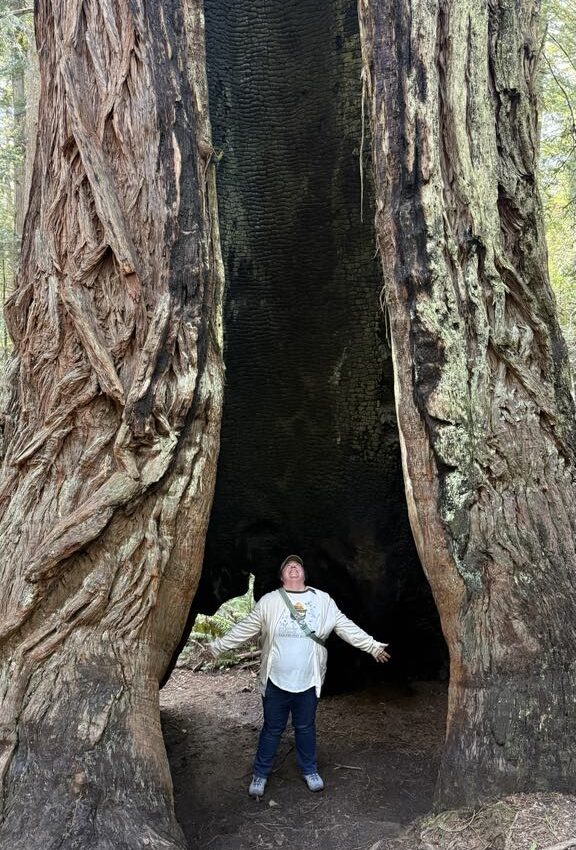“Have you a few moments?” my mom asked on the phone.
“Sure, what’s up?”
“My phone is telling me ‘nearby device scanning.’ Is that something I should be worried about?”
“Probably, let me do some research online. Hmm, you need to get Stacie [my sister] to change the WiFi and Bluetooth settings on your phone.”
“I don’t understand.” Long pause. “What was that second word that I need to change?”
I could tell by the inflection of my mother’s voice, that the word “Bluetooth” had geometrically escalated her confusion. As Charles Baxter states in The Art of Subtext, “Incidental stress is the tonal outpost of fugitive feelings and of layered or compounded emotion. As the eloquent music of idiomatic language, it is the homing device of effective liars, magicians, outcasts, losers, and poets.” I might add elderly mothers dealing with the internet to his list.
“Bluetooth.”
“What?”
“Blue the color and tooth like a molar.”
“Huh?”
The word Bluetooth is not even registering as a word in my mother’s mind. In The Sentence is a Lonely Place, Gary Lutz claims “that a word is matter, that it exists in tactual materiality, that it has a cubic bulk.” He says that only when spoken or thought about does it gain “three dimensions.” One of my degrees is in anthropology. I would argue that a word, whether written or spoken, only gains meaning through cultural context. In semiotics, a word or object or picture is a signifier which exists as a real entity and is attached to the signified, the cultural meaning associated with that word. A word is just a collection of letters without the associated signified. I don’t think a sentence can be a lonely place because it trails behind all its cultural connections. However trying to write a beautiful sentence can be a very lonely place indeed.
“‘B’ as in boy, ‘l’ as in love, ‘u’ as in umbrella, ‘e’ as in elephant…” and so on as I list whatever signified words that I have associated at that moment with the letters that make up Bluetooth.
“Who would ever put those two words together?”
“Some tech nerd who was into Harald Bluetooth, a Danish king around 1000 A.D.” (I didn’t learn this bit of historical trivia while working in the software industry but because I own an Icelandic horse.) Just get Stacie to fix this.”
“Well, thanks for the help. Be sure to write a page in your pony book today.”
“You mean Rough Riding through the White House: Quentin and Archie Roosevelt and their pony Algonquin?
“I can never remember the title.”
“Love you, Mom.”
After helping my mother with her technology problem of the day, I went back to work on my own problem—my MFA class on writing beautiful sentences. My sentence for discussion is from Jeanette Winterson’s Art [Objects]: Essays on Ecstasy and Effrontery. Winterson is a poet and novelist. She writes sentences so beautiful that I often want to throw her book against the wall in despair of ever achieving any sentences so stunning. In the following sentence, Winterson is discussing the Irish author, James Joyce.
His pocketfuls of words, that abrade and glitter, he scatters them, grinds them, eventually reforms them into a great whale of words, a thousand pages long, that sports and dives and terrifies and welcomes little men with picks (p. 82).
Winterson chooses her words carefully to indicate that Joyce is a challenging writer. She uses a right branching, introductory clause to emphasize the importance of words to Joyce—any analysis needs to begin with his “pocketfuls of words.” He can terrify with his verbal complexities. Her sentence uses explosive consonants as in the words “pocketfuls,” “sports,” and “picks” and hard stresses like “abrade” to catch the reader’s attention like spouts from a whale. She says Joyce takes words that “abrade and glitter” like smashed glass that sparkles like diamonds but can also cut the unwary. There aren’t any soothing sibilants in this sentence. He throws words around like separating out the chaff and grinding the wheat to “reform” them into a “great whale of words.” Yet Joyce can be as playful with words as a whale “sports and dives and terrifies.” Her lively images of a sporting whale are both unusual and layered metaphors—what Ellen Bryant Voigt calls a “provocative parallelism” in The Art of Syntax: Rhythm of Thought, Rhythm of Song.
Winterson subtly references Moby Dick, a great white whale that is mythic but can be destructive to those who hunt the legend. There is an internal rhyme in the polysyndeton “sports and dives and terrifies and welcomes” that slows down the cadence of the end of the sentence. It forces the reader to take the time to consider each word and realizes their importance. She implies that Joyces’s work is so great that it “welcomes little men with picks” who attempt to find the ambergris in the brain of a whale, the intellect of the work but only do so because they are terrified little men facing such genius. She uses the words “little men” deliberately to imply the limitedness of their thinking that they “pick” at a literary behemoth. The novel Moby Dick does not mention “pick” as a tool. Whale-spades and axes were used to flense the whale. The little men can’t shred Joyces’s work they can only nitpick.
The next day my mother calls again. Stacie fixed her Bluetooth but now her cell phone volume won’t work. She wants another pocketful of words.
Bio: P.S. Nolf writes articles about horses, humor, and history for online and national journals such as Equus, which published her article “Riding with Theodore Roosevelt,” and Chatham University’s Tributaries. She is currently writing a narrative nonfiction book Raising Rough Riders in the White House: Roosevelt’s Youngest Sons Archie and Quentin and their Pony Algonquin. She is a member of the Biographes International Organization and participates in a writers group within that organization. Last year, she earned a MFA in Nonfiction at Lindenwood University.





Leave a Reply